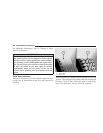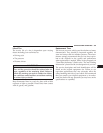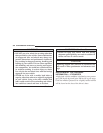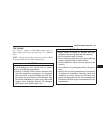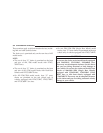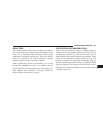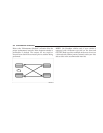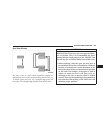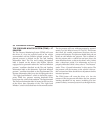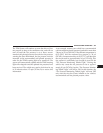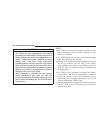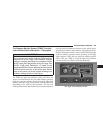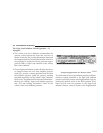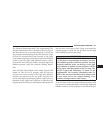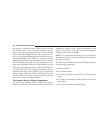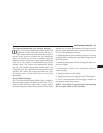
TIRE PRESSURE MONITOR SYSTEM (TPMS) — IF
EQUIPPED
The Tire Pressure Monitoring System (TPMS) will warn
the driver of a low tire pressure based on the vehicle
recommended cold tire inflation placard pressure. The
placard pressure is defined on the Tire and Loading
Information label. The Tire and Loading Information
label is located on the drivers side B-pillar. Vehicles
equipped to be operated in either the “max load inflation
pressure” condition described on the Tire and Loading
Information label or the alternative “light load inflation
pressure” condition described on the Supplemental Tire
Pressure Information label, may also be equipped with a
“Tire Light Load Inflation” switch to choose the appro-
priate TPMS low pressure warning threshold levels
based upon the vehicle load condition. The Supplemental
Tire Pressure Information label is located on the rear face
of the driver door. Operation of the “Tire Light Load
Inflation” switch is described later in this manual section.
The tire pressure will vary with temperature by approxi-
mately 1 psi (6.9 kPa) for every 12°F (6.5°C). This means
that when the outside temperature decreases, the tire
pressure will decrease. Tire pressure should always be set
based on cold inflation tire pressure. This is defined as
the tire pressure after a vehicle has not been driven for
more than three hours, or driven less than 1 mile (1.6 km)
after a three-hour period. For information on how to
properly inflate the vehicle’s tires, refer to ”Tire Pressure”
under “Tires – General Information” in this section. The
tire pressure will also increase as the vehicle is driven -
this is normal and there should be no adjustment for this
increased pressure.
The TPM System will warn the driver of a low tire
pressure if the tire pressure falls below the low pressure
warning threshold for any reason, including low tem-
perature effects, or natural pressure loss through the tire.
366 STARTING AND OPERATING



